The departure of Afterpay after it was subsumed by Block Inc did little to dampen the size of the Top 10 listed companies in Melbourne, which now accounts for 77 per cent of the market capitalisation of this list.
Dominated by some of the biggest names in corporate Australia with a concentration in the mining, health and banking sectors, this section of the list rose by $133 billion in value with BHP (ASX: BHP) as the biggest growth driver.
However, only two companies featured here – ANZ (ASX: ANZ) and Rio Tinto (ASX: RIO) - failed to lift their market cap over the past 12 months. One of the most notable upticks came from the country’s largest business lender National Australia Bank (ASX: NAB) which has been growing steadily since the 2019 appointment of Ross McEwan as CEO.
Toll-road operator Transurban (ASX: TCL) is starting to collect more revenue as more motorists around the world return to the daily commute, while Telstra seems to be finally moving on financially from its past troubles with the national broadband network (NBN) roll-out.
Meanwhile, online property and rental listings company REA Group (ASX: REA) returns to the Top 10 after a one-year hiatus, filling the gap left by Afterpay.
1. BHP Group (ASX: BHP)

MATERIALS
2021 rank: 1
Market Cap: $234.13b
FY21 revenue: US$60.82b
FY21 profit: US$11.30b
Listed: 1885
CEO: Mike Henry
CEO salary: US$14.52m
BHP Group (ASX: BHP) led a great rebalancing of the ASX 200 this year as the mining giant reclaimed its mantle as the Big Australian following a corporate unification that has eliminated its dual listing in the UK.
The move, which effectively saw BHP’s market capitalisation surge from 6.5 to 11 per cent of the ASX 200, is the final step in its separation from the British company Billiton which occurred in 2018. With 100 per cent of its stock now on the ASX, index investors have also been topping up their holdings to fortify the company’s market dominance.
The Big Australian is back, not only as the largest company in Melbourne but also in Australia with a market capitalisation of around $234 billion, aided by the unification and record high commodity prices across its key operations. That’s up almost $101 billion from this time last year, tipping out the Sydney-based Commonwealth Bank of Australia (ASX: CBA) which has been feeling the heat in recent months from the prospect of rising interest rates.
For one of the world’s biggest miners, the past year has been all about the resources boom, and despite the geopolitical issues confronting the global economy, BHP is confident there is more growth to come in the longer term.
BHP sees a sustainable future driven by strong global population growth and the unrelenting trend towards urbanisation. But the company is also making strides in reducing its carbon footprint, noting that its operational greenhouse gas emissions are 16 per cent lower since the first half of FY21, and on track to drop by at least 30 per cent by FY30.
In terms of its recent financial performance, the only weakness for the company is its coal business where wet weather and labour shortages hit operations. In November the group reached a deal to offload its interest in BHP Mitsui Coal (BMC) to Stanmore Resources (ASX: SMR) for up to US$1.35 billion.
“As the world decarbonises, BHP is sharpening its focus on producing higher quality metallurgical coal sought after by global steelmakers to help increase efficiency and lower emissions,” BHP’s president for Minerals Australia, Edgar Basto, said at the time.
Poor results from the coal division were more than offset in the December half by significant earnings growth in copper, petroleum and iron ore, particularly from BHP’s Western Australian operations.
BHP has been variously described as a money machine in the current climate, after increasing net profit 144 per cent for the first half to US$9.44 billion. The rewards for shareholders were sweet, with BHP announcing most of this, or US$7.6 billion, was going straight to shareholders in dividends.
The rewards were just as sweet for CEO Mike Henry whose reward for a year of growth was a US$14.52 million pay packet in FY21 – up from US$6.07 million the previous year.
While BHP is cashed up, it isn’t about to spend big on new acquisitions, instead leaning on a framework that it says ‘promotes discipline in all capital decisions’. BHP has a strong pipeline of organic opportunities which is where its immediate focus lies.
The group has done well from cost controls, necessitated by the pandemic. Costs will lighten further once the company merges its capital-intensive petroleum arm with Woodside Petroleum (ASX: WPL) in a $39 billion deal announced late last year. BHP is anticipating more than US$400 million in synergies from this merger, which will see the company hold a 48 per cent interest in Woodside.
In the near term, BHP’s Australian operations continue to face workforce challenges with the company said to be expecting to lose between 2 and 3 per cent of its workforce due to vaccine mandates that came into effect on January 31.
BHP is also exposed to the political situation in Chile, where leftist former student leader Gabriel Boric has recently come to power as the first president outside of the traditional centrist parties that have dominated the South American nation’s politics since its return to democracy in 1990.
In the second half of 2021, two Chilean copper operations – mostly Escondida and but partly Pampa Norte – accounted for almost a fifth of BHP’s earnings at US$3.88 billion.
Boric has hinted at the nationalisation of lithium to fund social spending programs, with echoes of the “Chileanisation of Copper” that led to the creation of state-owned mining giant Codelco more than half a century ago. Copper companies have nothing to fear this time around, according to Boric’s advisors, although higher taxes are likely and a constitutional convention includes proposals to declare that all minerals belong to the Chilean state.
2. CSL (ASX: CSL)
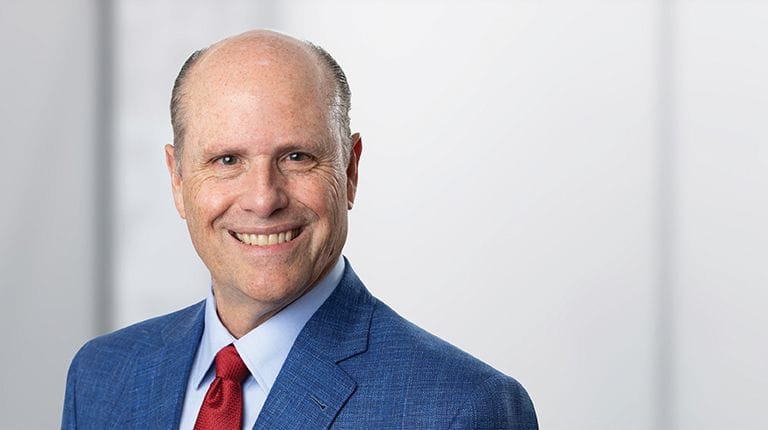
PHARMACEUTICALS, BIOTECHNOLOGY & LIFE SCIENCES
2021 rank: 2
Market Cap: $130.52b
FY21 revenue: US$10.31b
FY21 profit: US$2.37b
Listed: 1994
CEO: Paul Perreault
CEO salary: US$10.12m
Australian biotech giant CSL (ASX: CSL) has put behind it the setback of failing to develop its own COVID-19 vaccine by getting back to growth via acquisitions.
It hasn’t done that by halves after announcing plans to buy out Switzerland’s Vifor Pharma for US$11.7 billion ($16.4 billion) in a deal that is expected to settle in June.
The all-cash tender offer is being funded by a $6.3 billion capital raising, the largest ever for an Australian company to fund a single transaction.
The deal is expected to bolster the company’s financial performance in FY23, with CSL forecasting Vifor Pharma will be low-to-mid teens NPATA accretive per share in the first full year of ownership.
CSL is understood to have been eyeing Vifor for some time, with the acquisition allowing it to diversify through an expansion of its specialty medicine business. Vifor is a global specialty pharmaceutical company recognised for its products treating renal disease and iron deficiency.
The merger will boost CSL’s pipeline of products across the development phase by almost a third to 37, with up to four product launches expected in FY23.
The acquisition comes as CSL’s plasma collection business have faced disruptions globally due to industry-wide constraints caused by the pandemic.
However, CEO Paul Perreault, who returned to Melbourne recently after two years stuck in the US, says the group’s key products outside of plasma collections ‘continue their strong growth trajectory’. CSL’s haemophilia product IDELVION lifted sales by 17 per cent in the latest half-year while sales for per-operative bleeding product KCENTRA rose 15 per cent.
Although CSL is no longer pursuing plans to create a COVID-19 vaccine, the company is still producing Astra Zeneca from its Melbourne for global distribution. CSL has largely turned its research attention to mRNA vaccines to treat seasonal influenza.
CSL is progressing plans to create an $800 million facility in Melbourne for the manufacture of a cell-based influenza vaccine. The facility is under construction and expected to open in 2026. The Tullamarine plant is modelled on one operated by CSL subsidiary Seqirus in North Carolina in the US.
3. National Australia Bank (NAB)
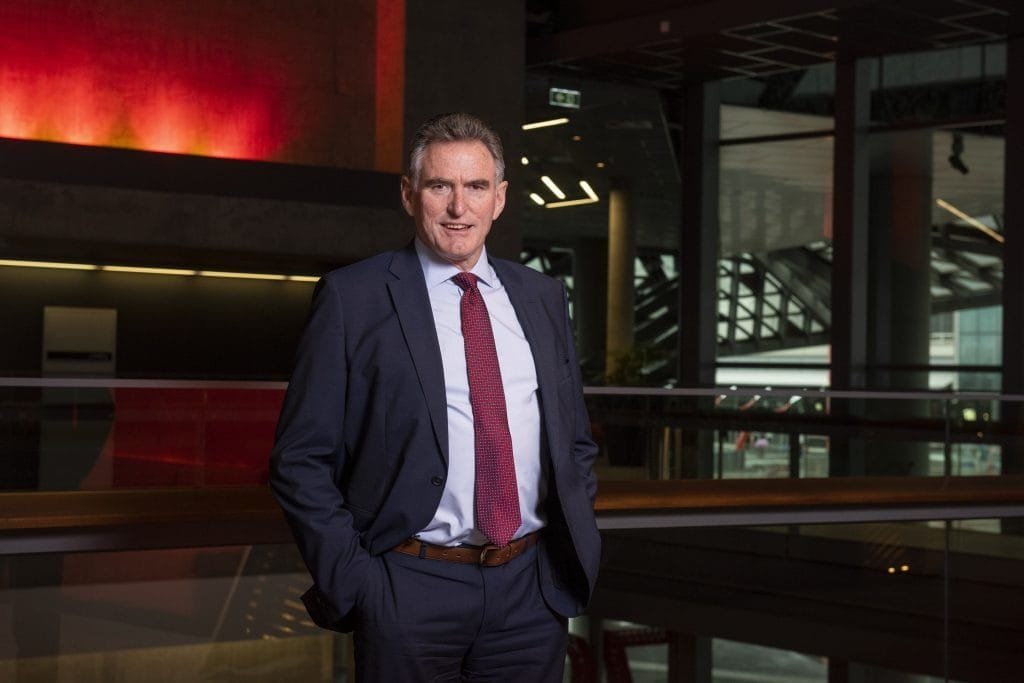
FINANCIALS
2021 rank: 3
Market Cap: $100.60b
FY21 revenue: $16.73b
FY21 profit: $6.36b
Listed: 1962
CEO: Ross McEwan
CEO salary: $4.01m
National Australia Bank (ASX: NAB) chairman Philip Chronican made the point at the December AGM that the group had grown from the fourth to the second-largest Australian bank by market capitalisation in the past two years.
The growth coincided with the appointment of Ross McEwan, the former head of Royal Bank of Scotland, as CEO in 2019. Shortly afterwards, McEwan set about implementing a new strategy with a back-to-basics approach including cost-cutting and a focus on emerging technology.
The strategy culminated with the sale of NAB’s wealth management business last year for $1.4 billion, and the acquisition of digital bank 86 400.
The deal put NAB on the path to a digital revolution, although it didn’t take long for the culture clash that exists between big banks and neobanks to rise to the surface. A report in The Australian revealed that 86 400 had suffered a staff exodus with about 50 of the 140 staff who initially transitioned to NAB exiting the business.
NAB has been integrating 84 400 into its digital operation UBank and, regardless of the staff hiccup, the group says the acquisition, and the $1.2 billion purchase of Citigroup’s Australian consumer business, will enable the bank to quickly build scale in its digital and consumer bank offerings.
NAB is already Australia’s biggest business lender, with the division driven by a rush of businesses looking to capitalise on international borders reopening. In its most recent quarterly update, NAB revealed a $1.8 billion cash profit for the three months to the end of December on the strength of home and business lending. NAB posted record monthly lending to businesses in FY22.
In the spirit of responsible lending, NAB has also joined the Net Zero Banking Alliance, which will see the bank wind down its financing of fossil fuels over time, while growing its portfolio of renewable energy finance. NAB is the only major Australian bank that refuses to directly finance a greenfield oil extraction project.
4. Australia and New Zealand Banking Group (ANZ)
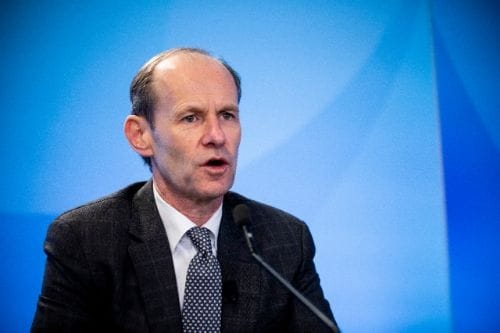
FINANCIALS
2021 rank: 4
Market Cap: $77.33b
FY21 revenue: $17.42b
FY21 profit: $6.16b
Listed: 1969
CEO: Shayne Elliott
CEO salary: $5.47m
ANZ Banking Group (ASX: ANZ) is facing some heat this year due to falling lending margins in a highly competitive mortgage market.
A turnaround of its mortgage business has been a priority with the banking giant last year revealing it had struggled to process home loan applications in the wake of elevated demand. It’s led to a loss of market share for ANZ.
The bank says a critical issue for its mortgage business compared to other majors is that a third of its home loan customers are small business owners and this complicates the lending process.
A quarterly update by the group in February revealed some progress was being made to improve response times for more complex home loan applications. ANZ revealed its Australian home loans balance sheet grew slightly in the first quarter of FY22, and its key focus is to manage margins while also trying to hang onto existing lenders.
Home lending volumes fell 1 per cent in the second half of FY21 despite the notable strength in the homebuyer market. ANZ’s falling share of home lending compares with healthy gains by Commonwealth Bank of Australia (ASX: CBA).
ANZ still has some way to go before it can confidently declare it is on top of its mortgage business. Elliott is targeting the second half of FY22 to see some improvements.
However, the bank is already reaping the fruits of improved business conditions. The brighter outlook led ANZ to release a net $567 million of unrealised bad debts, which helped drive the bank’s FY21 full-year cash profit 65 per cent higher.
ANZ is ramping up its $400 million digital transformation through the launch of its new ANZ Plus app scheduled for early 2022. Initially planned to be a transaction and savings app, ANZ Plus is expected to offer digital home loan services by the end of this year.
5. Telstra Corporation (TLS)

TELECOMMUNICATION SERVICES
2021 rank: 6
Market Cap: $46.40b
FY21 revenue: $23.13b
FY21 profit: $1.9b
Listed: 1997
CEO: Andrew Penn
CEO salary: $5.78m
For Telstra Corporation (ASX: TLS) investors, the past year has been looking up as Australia’s telco giant dialled up its mobile profitability and its growth prospects.
It seems that the perennial dividend stock has started to show signs of capital appreciation.
To cement its market dominance in the mobile market, Telstra this year announced a network sharing agreement with mobile rival TPG Telecom (ASX: TPG) designed to expand their 4G and 5G spectrum nationally.
The 10-year agreement will lift Telstra’s mobile coverage to 98.8 per cent of the population from 96 per cent, and in the process boost TPG’s coverage to second-best in the country.
The deal caps off a strong run for Telstra shares, which are now trading at five-year highs after rising by about 25 per cent in the past year alone.
Telstra’s gains have been aided by the US$1.6 billion ($2.1 billion) acquisition of Digicel Pacific, the Pacific region’s largest telco operator, in what is seen as a coup for Australian interests in the market.
The deal, strategically and financially supported by the Australian Government, will see Telstra own and operate Digicel after fending off competition by Chinese interests.
Digicel, which has about 2.5 million subscribers and 1,700 employees, is being sold by Irish billionaire Denis O’Brien who founded the company in 2006.
It has operations in Papua New Guinea, Samoa, Fiji, Vanuatu, Tonga and Nauru. Most of its annual service revenue of about US$431 million ($592 million) is generated in PNG.
While the deal is largely funded by the Australian Government to the tune of US$1.33 billion ($1.83 billion) in non-recourse debt facilities and equity-like securities, Telstra will contribute $360 million and own 100 per cent of Digicel’s equity.
The transactions highlight a pivotal year for Telstra that was also marked by the near final negative transitional effects of the NBN in the company’s reported results.
Telstra’s first-half profit for FY22 reflected momentum in the company’s underlying performance. While EBITDA was 14.8 per cent lower at $3.5 billion, Telstra says underlying EBITDA was up 5.1 per cent thanks to growth in its core mobile phone business – a sector where it is stamping its market leadership in the 5G network.
6. Transurban Group (TCL)
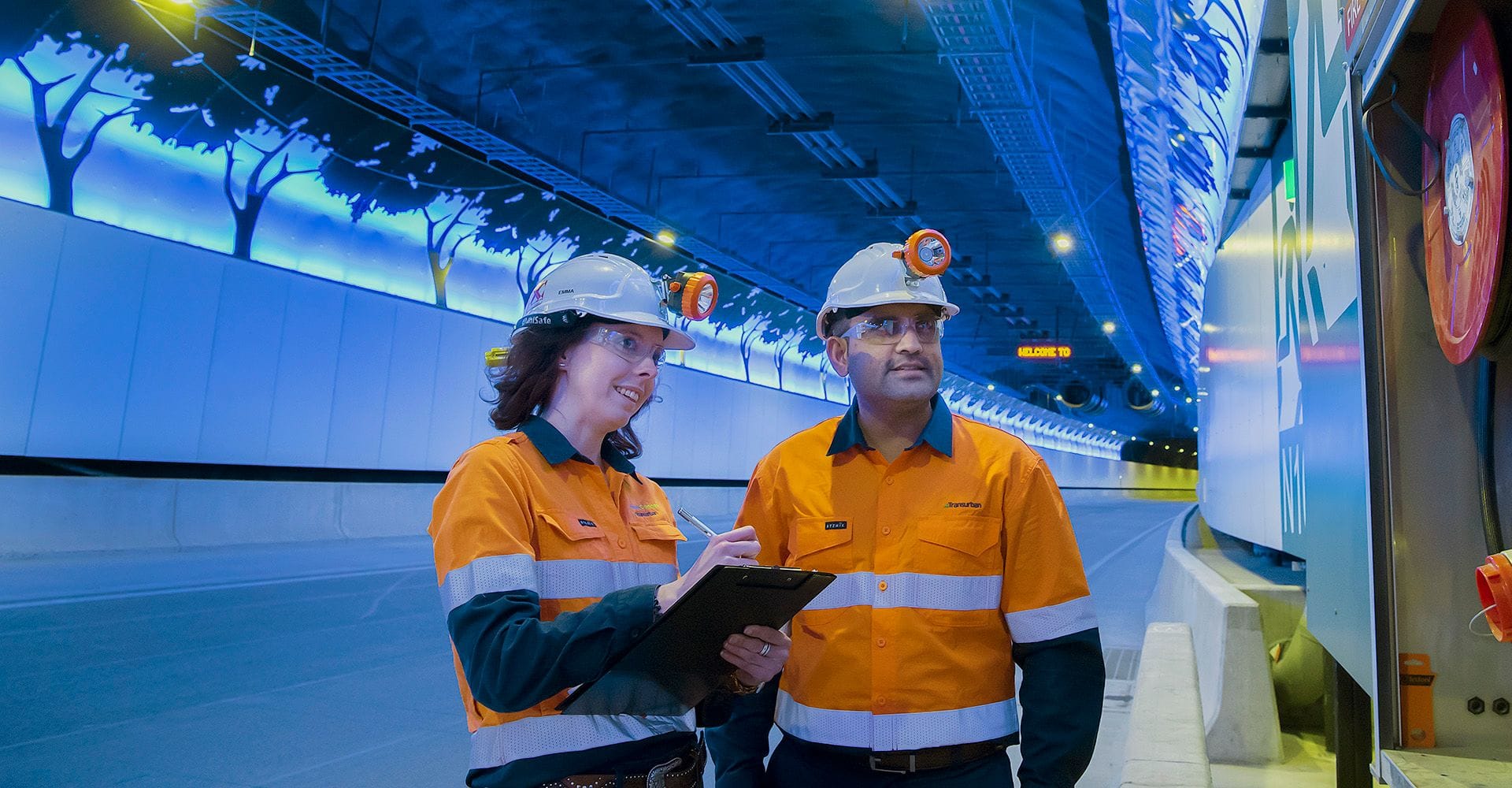
TRANSPORTATION
2021 rank: 7
Market Cap: $41.69b
FY21 revenue: $2.88b
FY21 profit: $3.27b
Listed: 1996
CEO: Scott Charlton
CEO salary: $5.51m
With work conditions yet to return to normal, toll-road operator Transurban Group (ASX: TCL) is still feeling the pain from the pandemic due to lower traffic volumes, but a rebound may be afoot as its loss narrowed in the latest half-year.
The company is confident it can now concentrate on operations and its development pipeline as controversial matters such as the dispute over the removal of toxic soils at the West Gate Tunnel project in Melbourne are now resolved.
Average daily traffic volumes across Transurban assets were still 4.8 per cent lower in the latest half compared to a year earlier. This is only because of a sharp decline in Sydney, where volumes fell 25.6 per cent. North America was the group’s most robust market with volumes up almost 30 per cent.
CEO Scott Charlton makes the point that Transurban is a company that takes a long-term view of its assets.
“We are investing in transportation networks that will be in operation for decades,” says Charlton, after announcing the latest interim net loss of $106 million for FY22. The result compares to a $448 million loss a year earlier.
However, the FY21 full-year result moved sharply into the black thanks to a $3.7 billion gain from the sale of 50 per cent of Transurban’s Chesapeake assets in the US. Transurban has partnered with AustralianSuper, Canada Pension Plan Investment Board and UniSuper to accelerate the group’s growth in the greater Washington region. Stripping out the proceeds from that sale, Transurban posted a $256 million loss last financial year.
Transurban has expanded its reach over the past decade from seven to 21 assets across five markets including North America. The assets have an average concession life of around 30 years, which means Transurban needs to take a multi-cycle perspective of its business.
Charlton says with hedging in place on more than 99 per cent of Transurban’s current debt book and CPI-linked price escalations on 68 per cent of its assets, the group is well shielded from higher interest rates in the emerging inflationary environment.
Over the latest half-year, Transurban bedded down the acquisition of the balance of Sydney’s WestConnex, the country’s largest road infrastructure project.
However, the acquisition from the NSW Government has raised concerns over Transurban’s dominance in the toll-road market. Australian Competition & Consumer Commission (ACCC) chairman Rod Sims has been vocal about the monopoly-like advantage gained by Transurban.
The company now operates 15 of 19 toll road concessions in Australia, dominating the markets in Sydney, Melbourne and Brisbane. Sims concedes it is hard to prove a lessening of competition, while Charlton notes it’s a heavily regulated sector where governments effectively set toll fees.
7. Rio Tinto (RIO)

METALS & MINING
2021 rank: 5
Market Cap: $40.95
FY21 revenue: US$63.49b
FY21 profit: US$21.09b
Listed: 1962
CEO: Jakob Stausholm
CEO salary: £2.79m
International mining giant Rio Tinto (ASX: RIO), like fellow Melbourne company BHP Group (ASX: BHP), is in a sweet spot thanks to the resources boom.
The deal was even sweeter for investors who this year received a combined ordinary and special dividend of US$10.40 per share - a record for the company. The payout represents a tidy yield for shareholders, especially as it followed a US$5.61 interim payout for the half-year result.
The iron ore money machine out of the Pilbara is firing on all cylinders.
However, the financial outcome belies a difficult year for Rio Tinto, a company that still has to tread lightly with investors following the reputational harm incurred when it blasted 46,000-year-old rock shelters at Western Australia’s Juukan Gorge in 2020.
Shareholders at the company’s AGM in May last year rejected the board’s executive salary packages in response.
Rio Tinto says it continues to rebuild relationships with traditional owners across its global operations, including the Puutu Kunti Kurrama and Pinikura (PKKP) leadership in WA. Rio Tinto says a ‘co-management of country approach’ and an appropriate remedy for the destruction of Juukan Gorge is ‘substantially progressed’.
Meanwhile, CEO Jakob Stausholm says the company is working hard to improve its operational performance, despite challenging conditions from prolonged COVID-19 disruptions. Stausholm says Rio Tinto is also positioning itself to ‘thrive in a decarbonising world’.
“We have a portfolio that is well positioned and are targeting disciplined investment in commodities that will see strong demand in the coming decades,” he says. “Our agenda is an ambitious, multi-year journey which we are determined to deliver, and we have already taken the first steps.”
Among this is a deal to acquire the Rincon lithium project in Argentina. The $825 million deal is part of Rio Tinto’s commitment to build on its battery materials business and strengthen its portfolio for the global energy transition.
But it hasn’t been plain sailing on the lithium front for Rio Tinto after the Serbian government in January revoked lithium mining licences granted to the company following protests from locals. While the Serbians pulled the licences on environmental grounds, it’s been suggested that the deportation of Novak Djokovic over his anti-vax stance didn’t help local sentiment.
Following Russia’s invasion of Ukraine, Rio Tinto also announced it would be reviewing its joint venture with Russian aluminium giant Rusal in Queensland Alumina, which runs an alumina refinery in Gladstone. Rio owns 80 per cent of the project, with the remainder held by Rusal – founded by Oleg Deripaska, one of the oligarchs who has been targeted with sanctions from the West.
Like BHP, Rio Tinto is also exposed to the uncertain political situation in Chile with a new socialist government, as it owns 30 per cent of the Escondida copper mine that is majority owned by BHP.
8. Coles Group (COL)
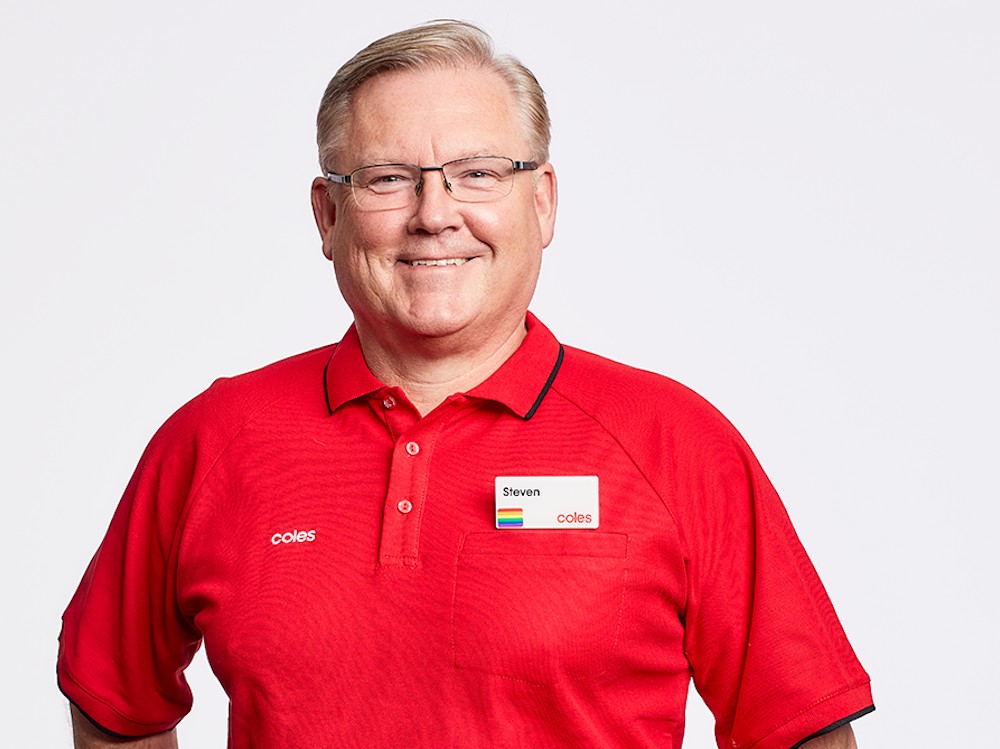
FOOD & STAPLES RETAILING
2021 rank: 9
Market Cap: $23.68b
FY21 revenue: $38.6b
FY21 profit: $1.0b
Listed: 2018
CEO: Steven Cain
CEO salary: $6.69m
The rapid acceleration of e-commerce revenue has given Coles Group (ASX: COL) the appetite to ramp up its digital strategy with a focus on home deliveries.
While Woolworths (ASX: WOW) is opting for a ‘micro-fulfilment’ strategy with smaller smart warehouses to pick and pack grocery orders, Coles is opting for two high-tech customer fulfilment centres in Sydney and Melbourne, where it will deploy automation technology from UK-based online retailer Ocado.
Coles will manage the orders online while Ocado will manage the distribution through its pick-and-pack technology.
Coles is also building two automated distribution centres in Queensland and NSW. They’re on track to be commissioned in 2023, while the customer fulfilment centres are scheduled to come online in 2024.
The high-tech distribution network has been in train for Coles since 2019, but the increase in online sales has put the project at the core of the group’s growth strategy.
The success of these centres, and those planned by Woolworths, will ultimately shape the future of supermarket retailing in Australia as more customers become accustomed to grocery delivery services.
Coles has good reason to be optimistic about the trend for online ordering. While e-commerce sales growth slowed in the December quarter due to fewer COVID restrictions, they were up 46 per cent compared to a year earlier. Online sales were stronger for liquor as well as grocery products.
Coles recorded a 1 per cent increase in sales to $20.59 billion in the December half-year, although costs related to COVID-19 disruptions led to a 4.4 per cent drop in EBIT to $975 million.
The latest results have led analysts to a consensus forecast of $39.3 billion in sales for Coles in FY22, up from $38.6 billion last financial year.
9. Newcrest Mining (NCM)
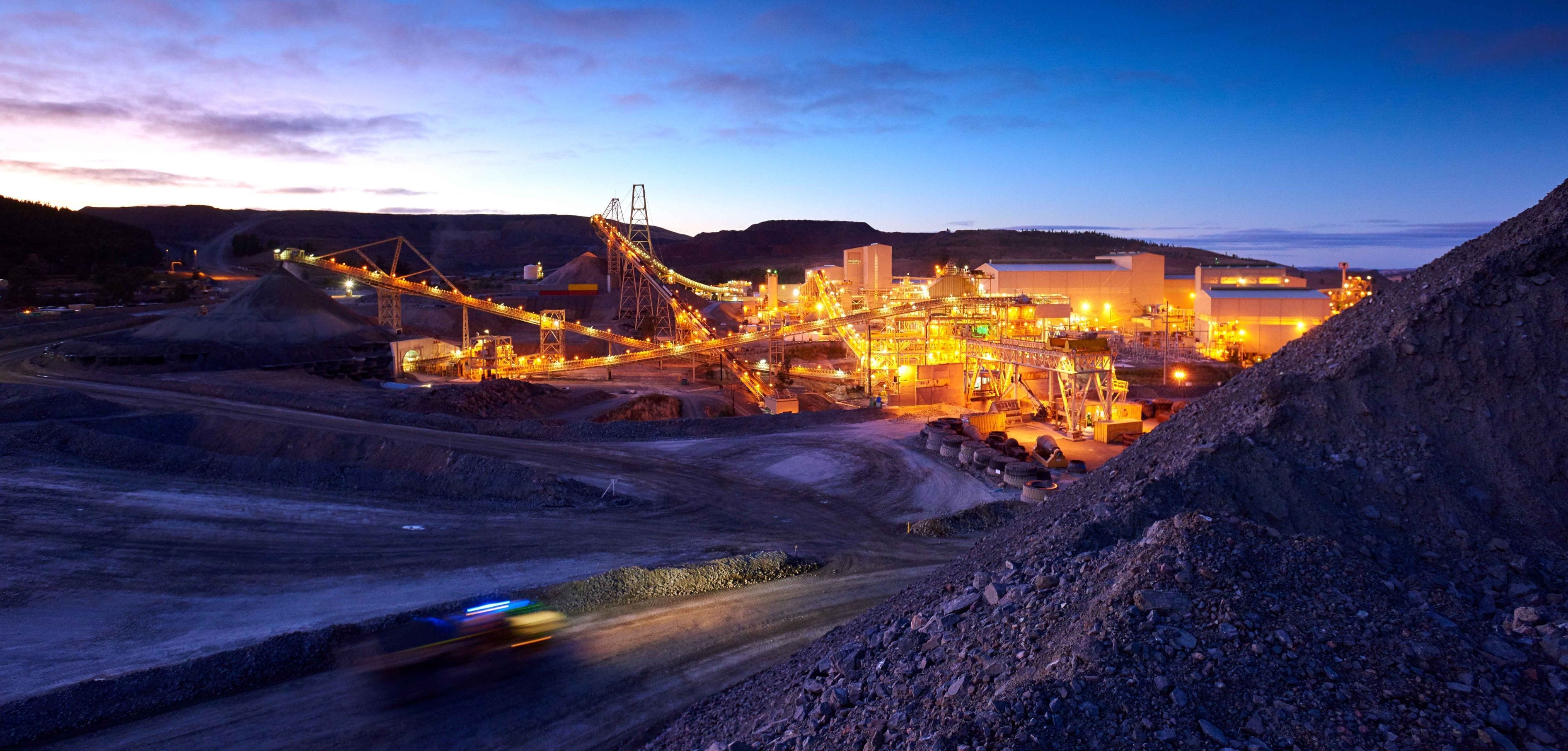
METALS & MINING
2021 rank: 10
Market Cap: $23.18b
FY21 revenue: US$4.57b
FY21 profit: US$1.16b
Listed: 1987
CEO: Sandeep Biswas
CEO salary: US$7.73m
Australia’s biggest gold miner, Newcrest Mining (ASX: NCM), is scaling up to full production at its flagship Cadia mine in NSW following disruptions from the planned expansion of its SAG (semi-autogenous grinding) mill.
The disruption had a big impact on the company’s financial performance in the latest half-year, with the profit highlighting the cost pressures facing the resources sector generally.
Newcrest’s underlying profit in the first half fell 46 per cent to US$298 million ($409.5 million), with the result also impacted by higher freight and labour costs.
However, Newcrest CEO Sandeep Biswas provided an optimistic view of the company’s fortunes, arguing that Newcrest has taken ‘a big step forward’ in its profitable growth agenda.
The optimism comes from a number of quarters, not least Newcrest locking down the US$2.8 billion ($3.8 billion) buyout of Canada’s Pretium Resources, which owns the Brucejack gold mine in British Columbia. This takes the company’s Canadian interests to two gold projects, including the nearby Red Chris mine which it acquired in 2019.
Brucejack is a large-scale, long-life, low-cost mine that Newcrest says will drive a material increase in mineral resources, ore reserves, production and cash flows. The mine is expected to lift Newcrest’s output by 15 per cent a year, keeping it above two million ounces a year for the next decade.
Newcrest has exposure to six tier-one orebodies in Australia, the Americas and the Pacific. Biswas says the depth and quality of the group’s global organic growth portfolio was evident in the findings of pre-feasibility studies for expansions at Cadia and Telfer Havieron in Australia, Red Chris Block Cave in Canada and Lihir in Papua New Guinea.
“Each of these studies indicate excellent rates of return and we are projecting a material growth in our operating margin and cash flow over the next decade,” says Biswas.
Newcrest is progressing its expansion of Cadia which is set to add about 258 million tonnes of ore to the resource, containing 3.5 million ounces of gold and 660,000 tonnes of copper.
Also at Cadia, Newcrest has been given the green light to boost the mine’s processing capacity from 32 to 35 million tonnes per annum. The expansion is expected to be completed in the September quarter this year.
10. REA Group (REA)

MEDIA & ENTERTAINMENT
2021 rank: 11
Market Cap: $18.22b
FY21 revenue: $927.81m
FY21 profit: $312.98m
Listed: 1999
CEO: Owen Wilson
CEO salary: $4.36m
Digital real estate company REA Group (ASX: REA) is riding the property wave in a big way.
Throughout the pandemic, the group’s key business platform, the realestate.com.au website, has been the go-to for property buyers, especially for those in lockdown mapping their eventual escape.
CEO Owen Wilson says as restrictions eased, sellers ‘made up for lost time’ by taking advantage of buyer demand.
“Our flagship site realestate.com.au continued its position as the number one address in property,” Wilson says.
“In October, a record of 145.5 million visits to realestate.com.au were achieved and the site has grown to be Australia’s seventh-largest online brand.”
The popularity of the real estate search engine, which is controlled by Rupert Murdoch’s News Corp (ASX: NWS), was evident in REA Group’s half-year net profit which rose 31 per cent to $226 million. Revenue jumped 37 per cent to $590 million.
The group’s fledgling Indian operations delivered triple-digit revenue growth, with REA Group declaring its platform is set to become the country’s top property search portal. The success in India lends weight to the company’s pursuit of further expansion in South-East Asia through its ownership of PropertyGuru.
Metrics from REA Group offer a keen barometer for the property market. New residential listings nationally in the December half were up 14 per cent from the previous year. Sydney was more active as listings rose 19 per cent compared to Melbourne where they lifted 5 per cent.
REA Group is still integrating its acquisition of home-loan broker Mortgage Choice which was completed at the end of FY21. The company says this is likely to be completed in the third quarter of FY23.
In the meantime, the prospect of higher interest rates and the looming federal election are expected to put a lid on listing volumes. However, REA Group is unfazed as it expects generally favourable market conditions in 2022.
“While COVID and the federal election may throw some curveballs, the effect on our market should be temporary,” says Wilson.
CLICK BELOW FOR THIS YEAR'S TOP 50
 |  |  |  |  |
Market caps are based on the close of trade, 18 March 2022.
This list was prepared with information provided by the ASX.
Get our daily business news
Sign up to our free email news updates.

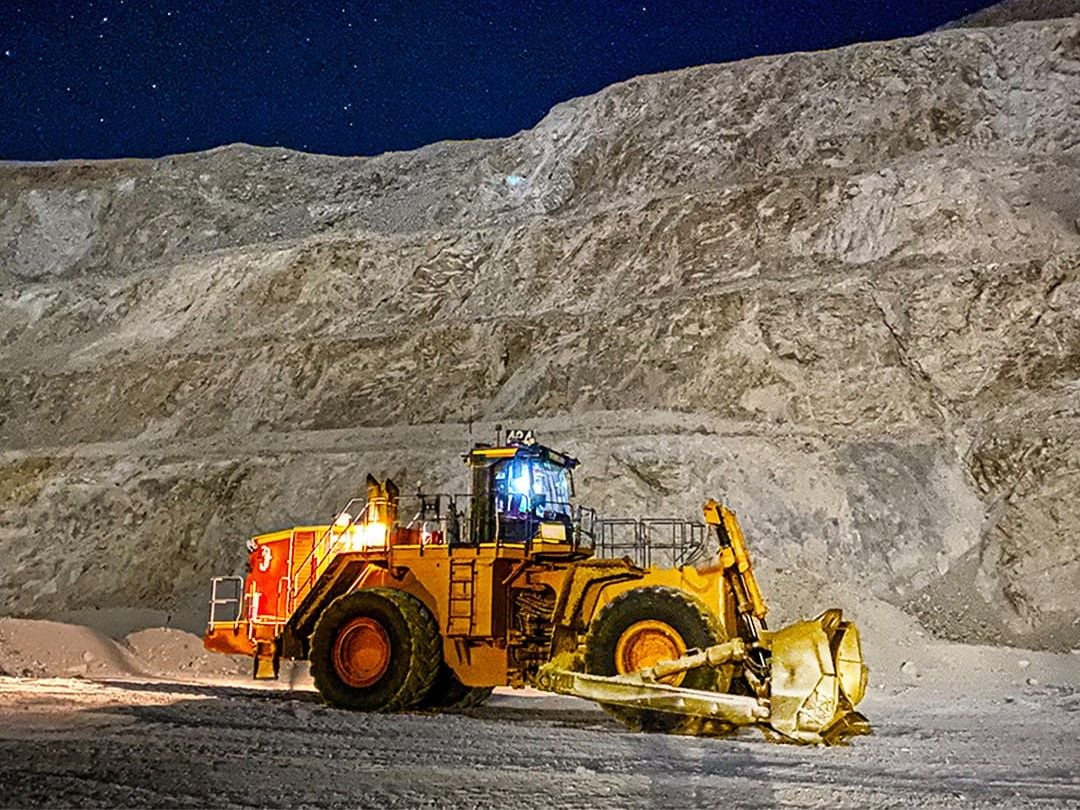)
)
)
)
)
)

